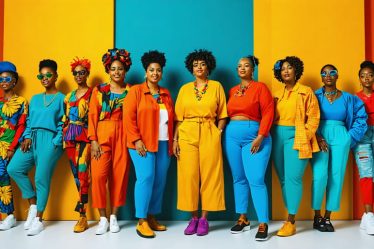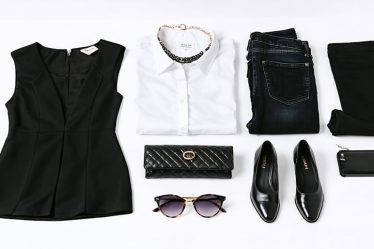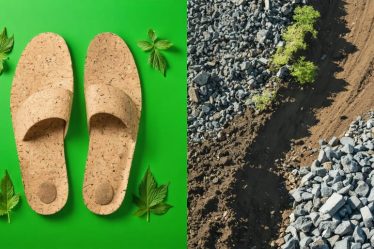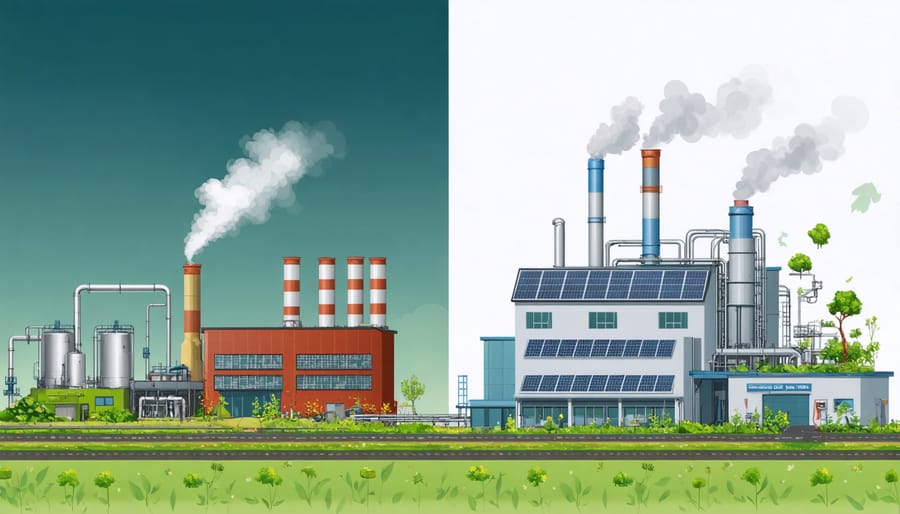
Rayon’s journey from wood pulp to fabric represents a fascinating intersection of innovation and environmental responsibility in modern sustainable fashion choices. Unlike purely synthetic materials, this semi-synthetic fiber offers a unique blend of eco-friendly characteristics when produced responsibly. Today’s closed-loop manufacturing systems recover up to 99% of processing chemicals, dramatically reducing environmental impact compared to traditional methods. While conventional rayon production once raised serious environmental concerns, modern innovations have transformed it into a potentially sustainable option for conscious consumers. The key lies in understanding which types of rayon truly align with environmental values – from Lyocell’s award-winning eco-friendly process to Modal’s reduced water consumption. As we navigate the complex landscape of sustainable textiles, rayon emerges as a compelling example of how traditional materials can evolve to meet contemporary environmental standards through technological advancement and thoughtful production practices.
The Modern Evolution of Rayon
From Traditional to Eco-Conscious Production
The journey of rayon production has come a long way from its early manufacturing days. Today’s sustainable fabric production methods have revolutionized how we create this versatile material. Modern manufacturers are increasingly adopting closed-loop systems, which recycle water and chemicals used in the production process, significantly reducing environmental impact.
I’ve noticed more brands embracing eco-friendly viscose production, using organic chemicals and responsibly sourced wood pulp. The Lyocell process, for instance, uses non-toxic solvents that can be reused up to 99% of the time. Many facilities now operate with renewable energy sources and implement strict waste management protocols.
What’s really exciting is how these improvements don’t compromise the quality we love about rayon – it’s still just as soft and flowing as ever, but now we can feel better about wearing it. These changes represent a beautiful balance between maintaining rayon’s beloved characteristics while protecting our planet.

Closed-Loop Systems: Game-Changer for Sustainable Rayon
Remember when recycling was just about sorting our paper and plastics? Well, the rayon industry has taken recycling to a whole new level! Modern closed-loop production systems are revolutionizing how we make rayon, and it’s a game-changer for sustainability. These innovative systems recover and reuse up to 99% of the chemicals used in production – pretty amazing, right?
I recently visited a sustainable rayon facility, and I was blown away by how they’ve transformed the traditional manufacturing process. Instead of chemicals going to waste after one use, they’re carefully captured, purified, and fed right back into the system. It’s like having a perfect cycle where almost nothing goes to waste.
The best part? This method not only reduces chemical waste but also cuts down water usage significantly. Some manufacturers have even figured out how to use organic solvents that are gentler on our environment. This sustainable approach means we can enjoy our favorite rayon pieces with a clearer conscience, knowing they’re part of a more earth-friendly future in fashion.
Environmental Benefits of Modern Rayon
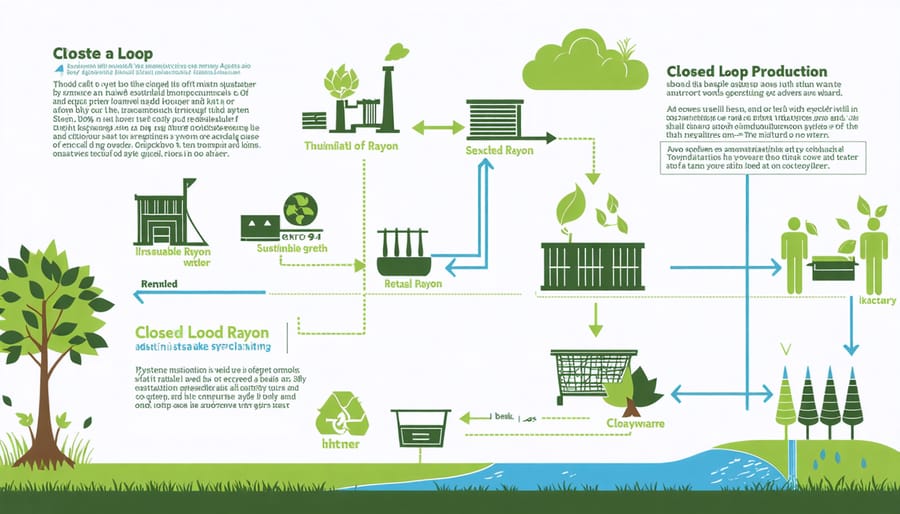
Biodegradability and Natural Sources
As someone who’s always curious about the environmental impact of my clothing choices, I was delighted to discover that rayon has some impressive eco-friendly credentials when it comes to biodegradability. Unlike synthetic fabrics that can take centuries to break down, rayon naturally decomposes within a few years when properly disposed of in landfills or composting facilities.
What makes rayon particularly special is its natural source material. The fabric starts its journey as wood pulp, typically from sustainable forest sources like beech, pine, and eucalyptus trees. Some innovative manufacturers are even using bamboo, which is one of the fastest-growing plants on Earth. I recently learned that certain types of rayon can even be made from recycled cotton scraps, giving new life to textile waste that would otherwise end up in landfills.
When you think about it, it’s pretty amazing that the soft, flowing rayon dress in your closet began as trees! The natural origin of rayon means it’s free from the petroleum-based materials found in synthetic fabrics. However, it’s worth noting that while the raw materials are natural, the processing does involve chemicals to transform wood pulp into fiber. The good news is that many modern manufacturers are adopting closed-loop systems that recycle these chemicals, making the production process more environmentally responsible.
Water and Energy Conservation
Modern rayon production has come a long way in terms of resource efficiency, and I’m excited to share how manufacturers are making impressive strides in water and energy conservation. Having visited several sustainable textile facilities, I’ve seen firsthand how closed-loop systems are revolutionizing the industry.
In traditional rayon production, water consumption was a major environmental concern, with some estimates suggesting up to 500 liters of water were needed per kilogram of fiber. Today’s innovative facilities have reduced this dramatically by implementing water recycling systems that purify and reuse water throughout the production process. Some manufacturers report achieving up to 90% water recovery rates!
Energy conservation is another area where we’re seeing remarkable improvements. Many facilities now use energy-efficient equipment and have optimized their production processes to minimize power consumption. Some manufacturers have even integrated renewable energy sources into their operations, using solar panels or biomass energy to power their facilities.
I particularly love how some brands are taking it a step further by using excess heat from production to warm their facilities during colder months. It’s these kinds of thoughtful innovations that make me optimistic about rayon’s future in sustainable fashion.
Remember though, while these improvements are significant, there’s still room for progress. As conscious consumers, we can support brands that prioritize these water and energy-saving initiatives in their production processes.
Caring for Your Eco-Friendly Rayon
Gentle Washing Techniques
When it comes to caring for your rayon pieces, gentle washing techniques aren’t just better for your clothes – they’re better for our planet too! I’ve learned through experience that treating rayon with care helps it last longer while minimizing its environmental impact.
Start by washing your rayon items in cool water (30°C or below) using a mild, eco-friendly detergent. Hand washing is ideal, but if you’re using a machine, pop your items in a mesh laundry bag and select the delicate cycle. This prevents unnecessary friction and reduces microfiber shedding into our waterways.
Skip the dryer whenever possible – air drying is your rayon’s best friend! I like to lay my rayon pieces flat on a clean towel away from direct sunlight. This method uses zero energy and helps maintain the fabric’s integrity.
For spot cleaning, try natural solutions like diluted white vinegar or gentle soap instead of harsh chemical cleaners. Remember to always check the care label first, and when in doubt, opt for the gentler option. These small changes in our washing habits can make a big difference in extending the life of our clothes and protecting our environment.
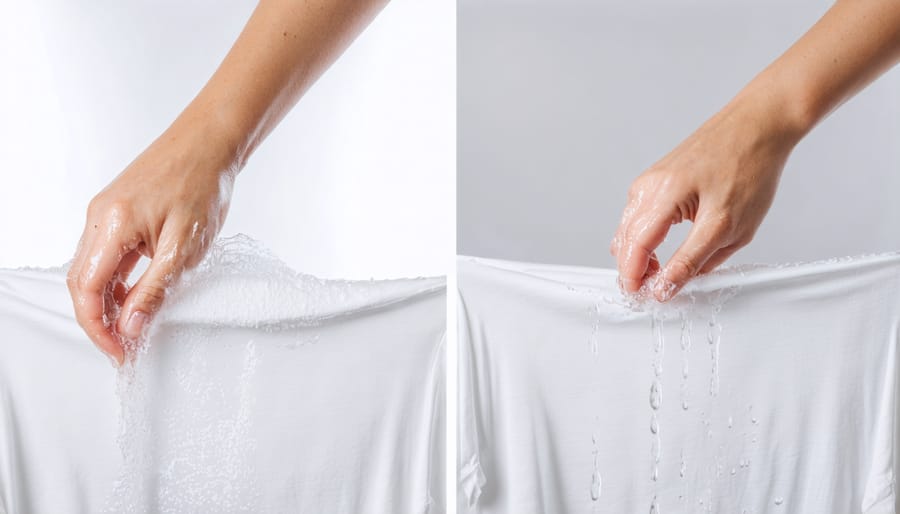
Extending Garment Life
Want to make your rayon pieces last longer while reducing your environmental footprint? I’ve learned through trial and error that caring for rayon doesn’t have to be complicated. Start by washing your garments in cold water using a gentle cycle and mild detergent. This not only preserves the fabric but also reduces energy consumption.
Here’s a game-changing tip I picked up from my grandmother: air-dry your rayon items whenever possible. Lay them flat or hang them on padded hangers to maintain their shape. If you must use a dryer, opt for the lowest heat setting to prevent shrinkage and fiber damage.
Between washes, try spot-cleaning minor stains instead of washing the entire garment. Store your rayon pieces in a cool, dry place away from direct sunlight to prevent fading and fabric weakening. For delicate items, consider using garment bags during storage to protect them from dust and snags.
By following these care practices, you’ll not only extend the life of your favorite rayon pieces but also reduce the frequency of replacements, making your wardrobe more sustainable.
Shopping Smart: What to Look For
When I’m shopping for rayon pieces, I’ve learned that not all eco-friendly claims are created equal. Here’s what I look for, and what I recommend to my conscious-consumer friends. First, check for certifications like GOTS (Global Organic Textile Standard) or FSC (Forest Stewardship Council) on the label. These tell you the fabric comes from responsibly managed forests.
Look for terms like “closed-loop production” or “lyocell process” on product descriptions. These indicate modern manufacturing methods that recycle chemicals and minimize environmental impact. Brands that are truly committed to sustainability will be transparent about their production processes.
The color and finish matter too. Opt for naturally dyed rayon or pieces with minimal processing. These typically have a softer, more natural look and feel. While they might cost more initially, investing in eco-friendly clothing pays off in durability and environmental impact.
Pay attention to the fabric blend. Pure rayon or rayon mixed with other natural fibers like organic cotton tends to be more eco-friendly than synthetics blends. Some innovative brands now use recycled rayon or forest-friendly alternatives like bamboo rayon.
Finally, consider the brand’s overall commitment to sustainability. Do they have clear environmental policies? Do they provide information about their supply chain? The most eco-conscious brands will proudly share these details. Remember, true sustainability isn’t just about the fabric – it’s about the entire production journey from forest to fashion.
As we’ve explored throughout this article, rayon’s eco-friendly status isn’t simply black and white. While traditional production methods have raised environmental concerns, modern sustainable practices and closed-loop systems are transforming rayon into a more environmentally conscious choice. The key lies in making informed decisions and supporting manufacturers who prioritize sustainable production methods.
Remember, as conscious consumers, we have the power to influence the industry through our choices. Look for brands that use Lyocell or Modal processes, check for sustainability certifications, and don’t hesitate to ask questions about production methods. I’ve found that many companies are increasingly transparent about their environmental practices – something that would have been unheard of just a few years ago!
By choosing responsibly produced rayon, caring for our garments properly, and extending their lifecycle through mindful maintenance, we can enjoy this versatile fabric while minimizing our environmental impact. Together, we’re part of a growing community that’s reshaping the future of sustainable fashion, one conscious choice at a time. Let’s continue to educate ourselves and make decisions that benefit both our wardrobes and our planet.

